Shajar al-Durr, Queen of Egypt
We don’t know when Shajar al-Durr, who would one day rule Egypt, was born. Nor do we know what name her mother gave her, or even who her parents were. Nobody was interested in recording the details of an insignificant slave girl. We know that she was probably born sometime around 1220 AD. She was probably of Turkic ethnicity, though she might have been Armenian. We know that she was fierce and intelligent, as will become apparent. And we know that she was beautiful. Beautiful enough that she was given the name of Shajar al-Durr, the Tree of Pearls. And beautiful enough that she was bought for the harem of As-Salih Ayyub, son of the Sultan of Egypt.

As-Salih’s father al-Kamil was a nephew of the great Saladin and like him had beaten back the fanatical crusaders of Europe on their holy war for the Middle East. As-Salih himself had been captured by the crusaders in 1221 during the fighting, though he was eventually traded back in exchange for the crusader leader John of Brienne. [1] As-Salih was the youngest of two sons, and his father exiled him to Damascus in 1234 as he suspected him of plotting a coup to try to bypass his brother and overthrow his father. It’s probable that he bought Shajar around this time. His uncle as-Salih Ismail (who ruled Damascus) soon expelled him as well and he retreated to his personal holdings in what is now southern Turkey.
Al-Kamil died in 1238, and as-Salih wasted no time in making his move for power. His father had left him rulership of the territory surrounding his own holdings, but he wanted more. He wanted Egypt. His father had made his brother al-Adil, but as-Salih had no intention of playing second fiddle to him. He began by conquering Damascus, with some local help, but his uncle managed to take back the city in 1239. As-Salih was captured by a former sultan of Damascus named an-Nasir Dawud, but Dawud decided that it would be better to ally with the pretender than hand him over to his brother. As the pair made ready to invade Egypt, word reached them that it wasn’t going to be necessary. Al-Adil’s troops had revolted and overthrown him, and they were inviting as-Salih to come and assume the throne. In June of 1240 he made a triumphant entry into Cairo.
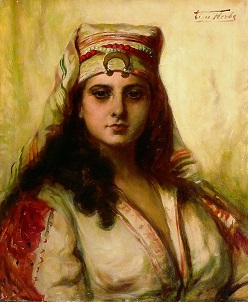
Shajar traveled to Cairo with as-Salih, and it was shortly after their arrival in the city that he married her. She had already given birth to his son, though his heir was an older child named Al-Muazzam Turanshah. As-Salih’s rule was far from stable, however. A lot of Egyptian nobles rallied behind his uncle as-Salih Ismail, and the war between the two dominated the early 1240s in Egypt. This ended in 1245 when as-Salih conquered Damascus and killed his uncle. In order to do this he bought a large number of slave soldiers – “Mamluks” – far more than any other ruler had risked putting in their army. He also hired the mercenary army known as the Khwarezmiyya. [2] After his uncle’s defeat he turned his attention on his erstwhile mercenary allies, who had conquered Jerusalem during the campaign and showed no signs of giving it up. [3] So he attacked them and wiped out their leadership, causing the army to break apart into dozens of separate mercenary bands throughout the region. Unbeknownst to him, this would also lead to a seventh crusade being launched from Europe. But this time their target was not the Holy Land. This time they attacked his home base of Egypt.
The crusaders made landfall at Damietta – coincidentally the same port which had been traded along with as-Salih for John of Brienne. Their plan was to conquer Europe and place it solidly under their control, to use as a springboard into the rest of the Middle East. Perhaps they were inspired by the Roman maxim that control of Egypt was key to control of the Mediterranean, or perhaps they simply saw it as an easier target than the western countries had proved. In November of 1249 the crusaders headed south to Cairo.
As-Salih was in Syria when the crusaders attacked, but he (and Shajar) immediately headed back to Egypt to defend it. Unfortunately the Sultan was suffering from an abscess on his leg, which had become seriously infected. The infection was so bad that his doctors were forced to amputate the leg, in an attempt to save his life. But the attempt failed, and on the 22nd November the Sultan as-Salih Ayyub died. Egypt faced a crisis.
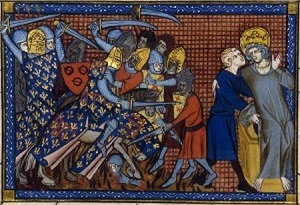
Rumours of the Sultan’s death soon leaked out, and the crusaders were convinced that their victory was imminent. In order to try to counter this, Shajar and the military leaders of the Egyptian army decided to try to conceal his death. The Sultan had pre-signed several blank orders, and so these were filled in and used to give the impression that while he was sick, the Sultan was still running the army. This succeeded in preserving the morale of the army, and when the crusaders attacked the Egyptian camp on the 8th of February at Al Mansurah the Bahri Mamluks who had taken command proved to be able leaders. They opened the gates of the city to make the crusaders think they had caught them off guard, then once they had drawn them in they fell on them in ambush. The result was a massacre. Upwards of 15,000 soldiers were killed, along with nearly 400 of the noblemen and Templars leading the force. The King of France (and his two brothers) were among the prisoners taken. It was a decisive victory and ended any threat from Europe for decades.
Following the victory at Al Mansurah, all eyes turned to Turanshah. Though he immediately made moves to consolidate his power, via a combination of bribery and strategic replacement of key officials, he underestimated the power that the Bahri Mamluks had gained under his father. Stories abound of his poor conduct – that he mistreated his father’s household, that he wrote to Shajeer demanding that she hand over her jewels, and so on – but his key failing was that he planned to replace the Bahri Mamluks (who were of Turkic origin) as leaders of the army with his own African Mamluks.
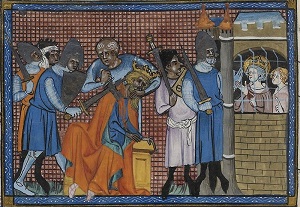
Rather than allow themselves to be replaced, the Bahri Mamluks attacked his palace during a feast. Turanshah fled, though his hand was “split open” in the attack by a sword-blow. He tried to take refuge in a tower on the Nile, but the Mamluks set it on fire. He fled the tower into the river, and was struck in the ribs by a spear while he ran. As he stood in the river, he begged for his life and offered to abdicate, but the Mamluks simply answered his words with arrows. Eventually their leader waded out into the water and hacked him to pieces. So ended Turanshah’s short reign. In his place the Mamluks raised the first female Muslim leader of Egypt – the former slave girl, Shajar al-Durr.

Shajar wasn’t quite the first female Muslim Sultan, though she is often referred to as such. In fact Razia al-Din of Delhi had beaten her to that title by 14 years, reigning as Sultan for four years before falling from power. And there were other female Muslim rulers who did not have the title of Sultan – most notably Arwa al-Sulayhi who ruled Yemen (sometimes jointly with a husband, sometimes on her own) for 71 years in the 11th and 12th century. Still, Shajar’s ascension was controversial. The underlying social strata of Egypt was the same as it had been since pharonic times though, and she was definitely far from the first female ruler of Egypt. She had also served as her husband’s proxy several times while he was out on campaign, and the civil service were used to taking her orders. So the people accepted her, and her generosity (the ransom of Louis IX was a huge economic windfall) cemented her position.
Shajar was solidly in charge in Egypt (minting coins and being acknowledged in the people’s prayers as Sultan). Unfortunately for her though, Egypt was a firmly Muslim country, and Muslim doctrine didn’t allow for female rulers. The emirs in Syria revolted rather than pay homage to her, and the people of Damascus raised up the Emir of Aleppo as a new Sultan. The fatal blow to her brief reign though was the rejection of her mandate by the Caliph of Baghdad. As the premier religious authority in the Middle East, his word on the matter was final, and his response to her message (addressed not to her but to her noblemen) was crystal clear:
If you are left with no man fit to rule but this woman, then it is our obligation to send you one of ours to take the sultanate.
As a result, Shajar was forced to step down after only eighty days of rule, to be replaced by a Mamluk Emir named Izz al-Din Aybak. There is some debate over exactly how this played out. Aybak had been acting as commander of the army before this, so there is one school of thought that says that he was simpling using her as a figurehead. Another (perhaps more likely) opinion reverses this – it claims that Shajar installed him as a proxy Sultan and kept firm control of the reigns of power herself. The two were married (this may have actually happened before Shajar stepped down) and in July of 1250 Aybak officially became Sultan of Egypt.
Whether Aybak had any political power or not, he was a gifted commander who had defeated the Syrian army by 1252. He occupied himself in suppressing rebellions and eliminating the more ambitious among his fellow Mamluks, but conflict with Shajar was inevitable. In addition Aybak had an earlier wife named Umm Ali who had given him a son, while the historical rumour is that Shajar refused to let him consummate their marriage. She also did her best to prevent him seeing his first wife or son, and tried to persuade him to divorce her. In 1257 things came to an inevitable bloody end.
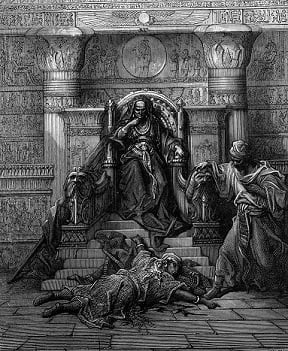
The spark was apparently a plan by Aybak to take a third wife, the daughter of a prominent emir. This was probably more a political move than anything else, but Shajar saw it as an attempt to oust her. So she and her servants murdered Aybak while he was taking a bath one night. Shajar did her best to take back power, claiming that Aybak had died of a sudden illness during the night. Unfortunately for her Umm Ali, Aybak’s first wife, rallied the palace servants against her. She was attacked and beaten to death by them. Legend has it that they did so with clogs, and that they threw her body into a moat where it lay naked for three days after her fine clothes stolen by the poor of the city. Eventually, after being attacked by scavengers both human and non-human, her body was finally buried. [5]
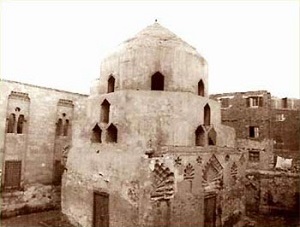
Aybak’s young son Al-Mansur Ali was installed as Sultan, though he only ruled for two years before being killed and replaced by another one of the Mamluk leaders. The Mamluks would go on to rule Egypt for the next two hundred and fifty years. As for Shajar, she was largely disregarded by the official histories. Like Razia before her and Tandu Khatun (who ruled Persia as regent from 1411 to 1419), her anomalous reign did nothing to break the innate prejudices that prevented women being recognised as rulers. Instead it was easier to sweep her under the rug, and to omit her from the official list of Sultans.
Shajar al-Durr did remain a part of the folklore of the people however, as seen in “Sirat al-Zahir Baybars”. This was an epic poem that told a fictionalised account of the life of Baybars, the Mamluk who took power three years after her death and who was responsible for setting the Mamluk Sultanate firmly in power. In the poem Shajar is the daughter of the Caliph of Baghdad, who grants her Egypt to rule. She adopts Baybars as a son (from which came his right to rule), but after she kills the would-be usurper Aybak she falls from the castle roof while fleeing his henchmen. It’s a deeply romanticised and highly fictionalised account, but it serves as a testament to the high regard the people had held Shajar in. Yet it also serves as an illustration of the rigid social structures of the time. Even among those willing to accept a female ruler, none of them could believe that a former Turkic slave girl had risen to rule the same land where Cleopatra had reigned over a thousand years before.
Images via wikimedia except where stated.
[1] As John had previously briefly been King of Jerusalem, he was actually traded for a valuable port city as well as as-Salih. John would go on to become regent/co-Emperor of Byzantium.
[2] They were the army of the Khwarazmian Empire, which had been conquered by the Mongols in 1220. Their sultan had fled with his army and tried to conquer new territory, but had died in 1231. Following his death the army had held together by hiring itself out to the highest bidder.
[3] The city had been conquered by the sixth crusade, but the capture by the Khwarezmiyya marked the last time it would ever be under Christian control.
[4] Al Mansurah literally means “The Victory”, though the name predated this battle. It was still seen as a great omen.
[5] An even odder legend has it that Umm Ali made a special dessert to celebrate, and that this is the origin of the traditional Egyptian dessert that bears her name.
